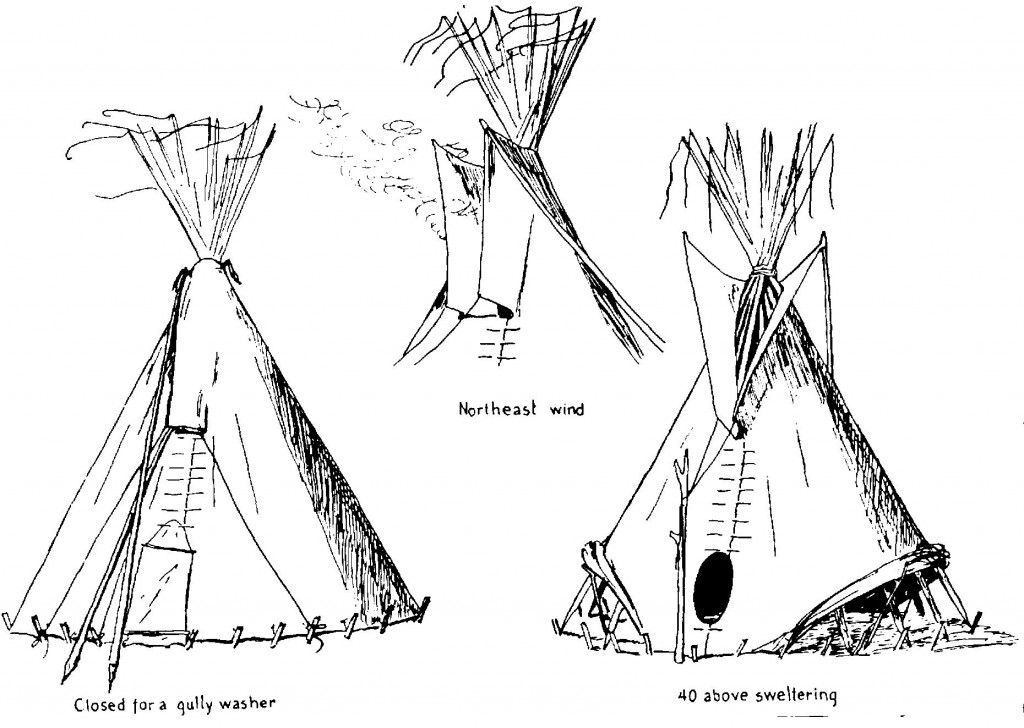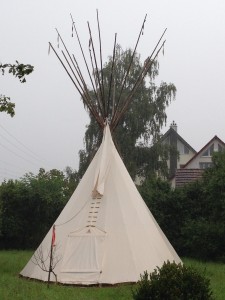WHAT ARE SMOKE FLAPS?
They are like two ears that listen to the sky or like the arms of a mother protecting her child. 
Among the Cree Indians, a woman is seen in the tipi. The smoke flaps represent the arms that she extends to the sky or closes protectively, the cover is her dress. Source: Nonam
SMOKE DAMPER RODS
The smoke flap rods are used to bring the smoke flaps into the correct position. For this you use stable but rather light tipi poles. Depending on that, they have to be shortened a bit. Ultimately, when they are fully opened (as in the picture above), they should slightly cross or meet at the back. If you grind the tips of the rods a bit round, you prevent the rod tips from rubbing through the tabs over time. Threading into the flaps can be a test of patience for an inexperienced tipi owner, but with a little practice it usually works. If a rope is pulled into the tab, it can help to thread the rods easier in strong winds.
SMOKE FOLD
The smoke flaps must never be stretched like sails. Ideally, the smoke flaps should move like flags in the wind. If they cannot move, they offer more surface to attack and the smoke flaps could be torn by the wind.
ORIENTATION
Who in the tepee a fire would like to light, you should first align the smoke flaps to the wind. The wind direction is determined with the help of wind flags, which are tied in at the top of the pole tips, for example. The smoke flap opening should be chosen so that it can literally pull the smoke out of the tipi with the wind. Here are a few examples of how to align the smoke flaps.

At a heavy rain or snow, the tipi can be completely closed, as shown on the outside left. In this condition, the smoke will hardly escape and the fire should be choked.
Often we are asked what to do with the smoke flaps when the teepee is not used. It is ideal if the tips touch above, then R is the leastegen a and the tipi remains well ventilated.

